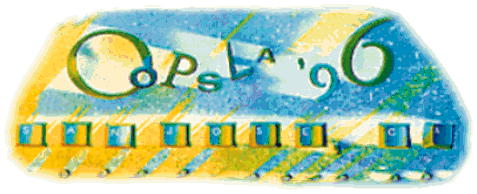 Business
Object Workshop II
Business
Object Workshop II Business
Object Workshop II
Business
Object Workshop II
Comments:
'Alice had never been in a court of justice before, but she had read about them in books, and she was quite pleased to find that she knew the name of nearly everything there. "That's the judge," she said to herself," because of his great wig." ...
'And that's the jury-box," thought Alice; "and those twelve creatures," (she was obliged to say "creatures," you see, because some of them were animals, and some wer birds,) "I suppose they are the jurors."' Lewis Carroll. Alice's Adventures in Wonderland.
Business patterns are powerful, high-level constructs that provide a natural and well-structured way of both understanding and specifying businesses and their rules. To be of use, business specifications have to be presented in an abstract and precise manner, and this paper shows how to do just that. Key concepts include business invariants and operations, and a higher level notion of "business pattern". Specification built in this way can be parameterized and reused in various business contexts. Business patterns in particular promise to be extremely helpful as a basis for systematic businesss analysis and subsequent implementation of the results of the analysis. We have successfully used these concepts and constructs in our engagements with (insurance) customers (Kilov et al., 1996).
The motivation for our work is to allow the production of complete, rigorous business specifications understandable by both business users and system developers. These specifications require rigorouse expressions of semantics -- that is, assertions -- rather than loose, "intuitive," descriptions. We present different kinds of reusable and abstract specification fragments -- patterns -- such as "information gathering" and "joint ownership." Unlike typical programming constructs, instantiations of business patterns are inherently interactive and so must adapt to their changing environment.
Copyright restrictions prohibit reproducing full text. This article and references are available directly from the authors.
Harrison, W.H., Kilov H., Ossher, H.L., Simmonds, I. Technical Note: From dynamic supertypes to subjects: A natural way to specify and develop systems. IBM Systems Journal 35:2:244-256, 1996.
Kilov, H. Natural Modularity. IBM T J Watson Research Report RC20544 (91062) 9 September 1996.
Kilov, H. Some materials on relationships for the enterprise viewpoint of RM-ODP. Accredited Standards Committee X3H7-96-01, 6 January 1996.
Kilov, H. Business rules for the enterprise viewpoint of RM-ODP. Accredited Standards Committee X3H7-96-06, 13 September 1996.
Kilov, H., Mogill, H., Simmonds, I. (1996) Invariants in the trenches. In: Object-Oriented behavioral specifications, H. Kilov and W. Harvey (Eds.) Kluwer Publishers, 1996.
 Business
Object Workshop II
Business
Object Workshop II